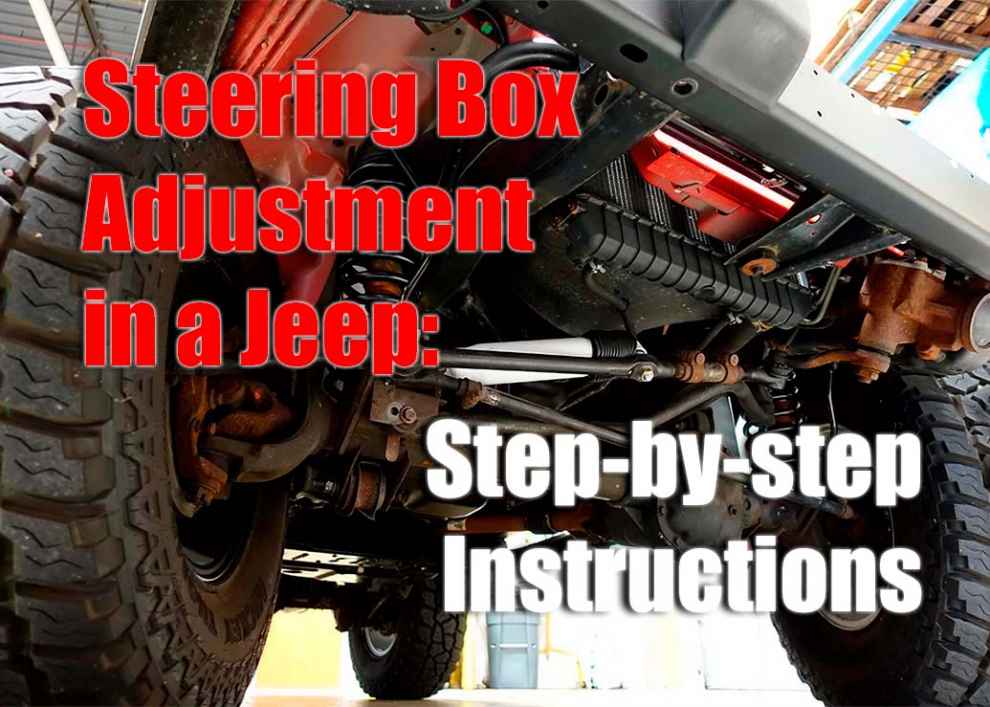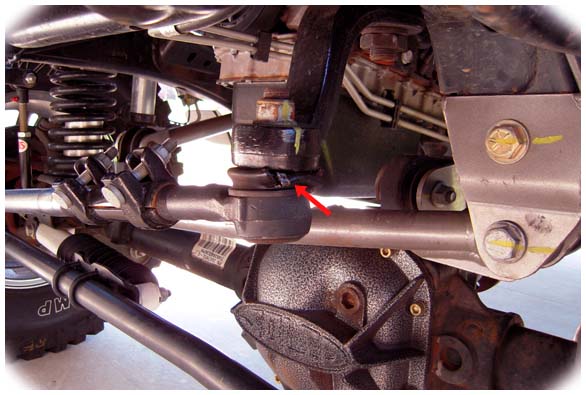If you own a Jeep, you may find yourself faced with the task of adjusting the steering box at some point. The steering box contains components that are responsible for controlling the movement of your vehicle’s wheels as it is steered. Proper adjustment of these components is essential to ensure that your Jeep is handling correctly and safely when on the road. In this article, we will provide step-by-step instructions on how to adjust the steering box in a Jeep.
Tools Needed for Adjustment
The following tools will be needed to perform an adjustment on your Jeep’s steering box:
- Socket wrench
- Wrench set
- Jack stand
- Jack
- Clean rag
Steps for Adjusting the Steering Box
Adjusting the steering box requires caution and precision to ensure proper alignment and responsiveness. Here are the steps to adjust the steering box:
- Step 1: Jack up Vehicle and Secure it
Before beginning any work on your Jeep, the first step is to jack up the vehicle and secure it on jack stands. This will allow you to have access to all the components that will need to be adjusted. Make sure that the vehicle is securely placed on the jack stands before proceeding with any further steps. Also read here which is better – jack stands or ramps.
Step 2: Disconnect the Drag Link from Pitman Arm
The next step in this process is to disconnect the drag link from the pitman arm, which is located near the center of your Jeep’s steering box. Use a socket wrench or an appropriate wrench set to loosen and remove the nuts or bolts that are holding this connection together. Once these have been removed, you can safely remove and set aside the drag link so that it does not interfere with your work going forward.
- Step 3: Loosen the Jam Nut on Pitman Arm
Once you have disconnected all your components from each other, you can begin adjusting them as needed by loosening their jam nuts with a socket wrench or appropriate wrench set. In this case, you will need to loosen the jam nut on the pitman arm, which is located near the center of your Jeep’s steering box.
- Step 4: Rotate Pitman Arm
Once you have loosened the jam nut on the pitman arm, you can now rotate it to make any necessary adjustments. Turning clockwise will make your Jeep more sensitive to steering inputs while turning counterclockwise will make it less sensitive. Be sure to take small increments when adjusting and test out how your Jeep responds each time before continuing with further adjustments.
- Step 5: Reattach Drag Link and Tighten Jam Nut
Once your desired settings have been achieved, you can reattach the drag link to the pitman arm and tighten down its mounting hardware such as nuts or bolts using a socket wrench or appropriate wrench set. After verifying that all these components are secure, be sure to retighten down the jam nut on the pitman arm as well to ensure that none of your adjustment settings shift during operation.
- Step 6: Test out New Settings
The final step in this process is testing out your newly adjusted steering box settings by taking a short drive in your Jeep. Pay special attention to how the steering feels when driving and make any necessary adjustments as needed until you are satisfied with the results.
Conclusion
Adjusting the steering box in your Jeep is an important task that, when done correctly, can help ensure that your vehicle is performing optimally when on the road. This is not merely a task but a long-term investment in the durability and performance of your Jeep. This guide provides you with a way to confidently navigate the procedure, reducing the risk of errors that could lead to more serious mechanical issues down the line.
An accurate adjustment not only betters your driving experience but also minimizes undue wear and tear, thereby extending the longevity of your vehicle’s other essential components. Concluding, it’s worth emphasizing the importance of regular check-ups and adjustments. These preventive measures can significantly reduce future maintenance costs and ensure a safer, more enjoyable driving experience.

 Step 2: Disconnect the Drag Link from Pitman Arm
Step 2: Disconnect the Drag Link from Pitman Arm
Add Comment